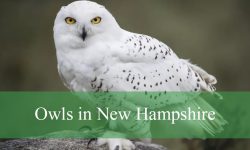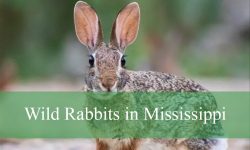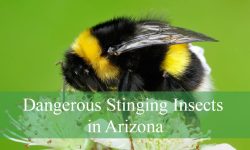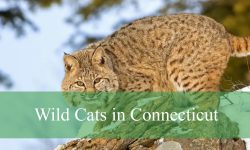White Birds in North Carolina stand out with their bright feathers and graceful appearance. They can be found in many habitats, including wetlands, forests, and along the coast. Their striking white plumage makes them easy to notice and fun to identify.
This article introduces 21 White Birds in North Carolina, complete with pictures and simple identification tips. These birds range from common species like egrets and gulls to seasonal visitors and rare sightings. Each one plays a unique role in the state’s birdlife.
Spotting White Birds in North Carolina can be an exciting part of any nature walk or birding trip. With a little attention to their size, shape, and habits, it becomes easier to tell them apart. Use this guide to recognize and enjoy the beauty of these birds across the state.
Common White Birds Found in North Carolina
White Ibis (Eudocimus albus)

The White Ibis is a striking wading bird notable for its entirely white plumage contrasted with a long, curved, bright red-orange bill and matching legs. Adult White Ibises measure about 22 to 27 inches in length with a wingspan ranging from 36 to 41 inches. Their slender bodies and long necks help them forage gracefully in shallow waters. During breeding season, their facial skin around the eyes turns bright red, making them even more eye-catching.
White Ibises are easily recognized by their distinctive downward-curved bill, which they use to probe mudflats, marshes, and shallow estuaries for crustaceans, insects, and small fish. Their loud, high-pitched calls are often heard in flight or while foraging in groups. They typically travel in flocks, flying in V-shaped formations or loose groups, often seen dipping their bills into the water in search of food.
In North Carolina, White Ibises inhabit coastal wetlands, salt marshes, and freshwater swamps. They prefer warm, shallow waters along the coast and sometimes venture inland to lakes and ponds. These birds are most commonly seen during the warmer months, and their presence is an indicator of healthy wetland ecosystems. Their social and gregarious nature makes them a common sight in suitable habitats across the state.
Great Egret (Ardea alba)
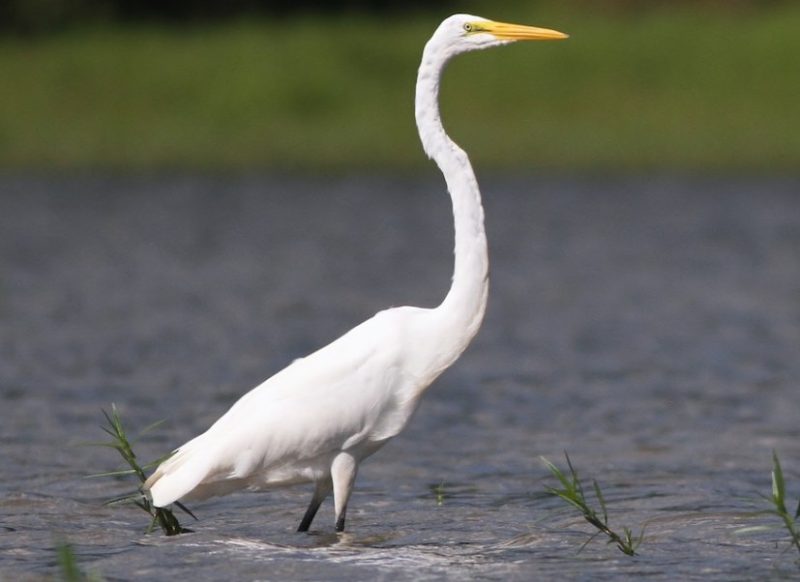
The Great Egret is a large, elegant bird with entirely white plumage and a long, slender yellow bill paired with black legs and feet. Adults measure about 37 to 41 inches in length and boast a wingspan of approximately 52 to 57 inches. This graceful bird often stands still like a statue while hunting, striking with precision to catch fish, frogs, and other small aquatic creatures.
Identification is straightforward due to its size and pure white color. The Great Egret’s slow, deliberate wing beats and long neck extended in flight distinguish it from other white herons. During the breeding season, delicate, wispy plumes called aigrettes grow on its back, used in courtship displays. Its soft, low calls sound like a croaking or harsh “quawk,” usually uttered when disturbed.
In North Carolina, Great Egrets are common in freshwater and saltwater wetlands, including marshes, riverbanks, and lakeshores. They are year-round residents but especially abundant in warmer months when food is plentiful. These birds prefer open, shallow water for feeding and are often spotted wading slowly through water or standing patiently to ambush prey. Their presence contributes to the rich biodiversity of North Carolina’s wetland environments.
Snowy Egret (Egretta thula)
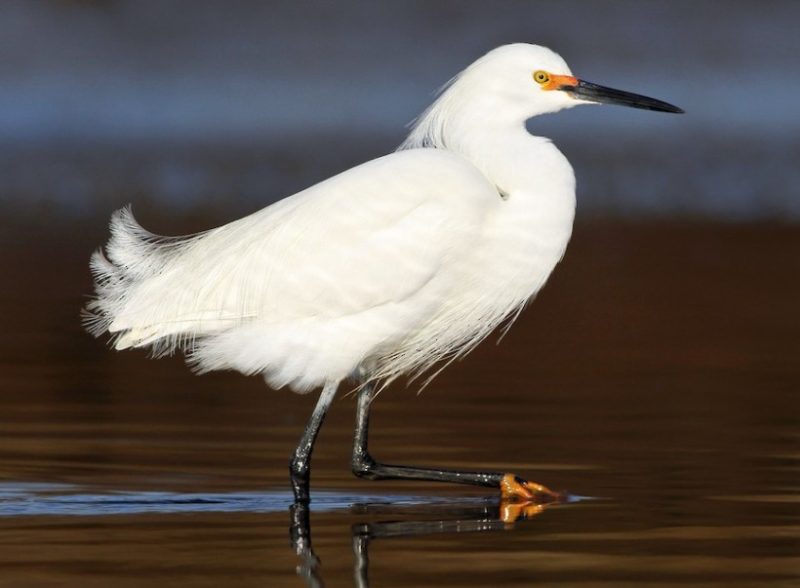
The Snowy Egret is a medium-sized heron with brilliant white feathers and striking black legs topped with vivid yellow feet, often called “golden slippers.” Adults measure approximately 24 to 27 inches in length with a wingspan near 39 to 41 inches. Their slender, graceful bodies and distinctive yellow lores (the area between the eyes and bill) make them easily identifiable.
This bird is known for its active foraging behavior, using its feet to stir up mud or water to flush out small fish and crustaceans. Snowy Egrets often perform elegant, quick movements while feeding, including foot-trembling and wing-spreading. Their calls include a sharp “chee” or a soft, raspy chatter during social interactions or flights.
Snowy Egrets inhabit coastal marshes, tidal flats, swamps, and freshwater wetlands throughout North Carolina. They tend to gather in small groups and are more active during daylight hours. Their bright yellow feet and energetic hunting style make them a favorite among birdwatchers. These egrets thrive in healthy aquatic environments, indicating good water quality.
Little Blue Heron (Juvenile) (Egretta caerulea)
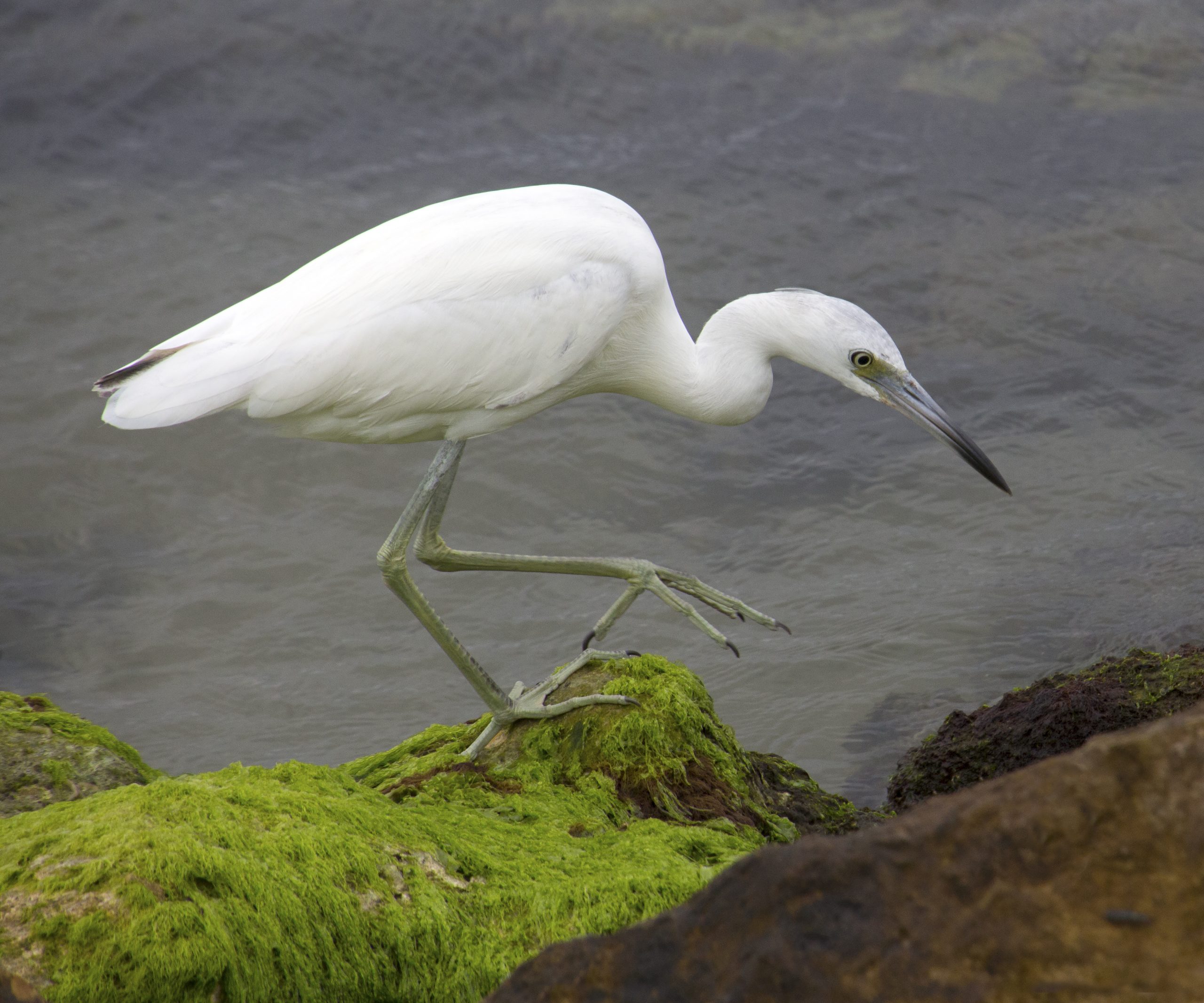
Juvenile Little Blue Herons are unique because unlike adults, they have pure white plumage, which can cause confusion with other white herons. Juveniles measure about 24 to 27 inches in length with a wingspan close to 38 to 41 inches. Their slender bodies, long legs, and pointed bills resemble adults, but their white feathers gradually transition to slate-blue over two years.
Young Little Blue Herons can be identified by their dark legs and bill, which contrast with the white feathers. As they mature, their plumage changes progressively, and their eyes turn a distinctive reddish color. Unlike adults, juvenile vocalizations are quieter and less frequent but include soft “kree” sounds when alarmed or communicating.
In North Carolina, juvenile Little Blue Herons are found in freshwater marshes, coastal estuaries, and wetlands. They often share habitat with other wading birds and forage in shallow water for fish, amphibians, and aquatic insects. Their white coloration provides camouflage among other white birds during early life stages but becomes more distinctive as they mature into adults.
Cattle Egret (Bubulcus ibis)
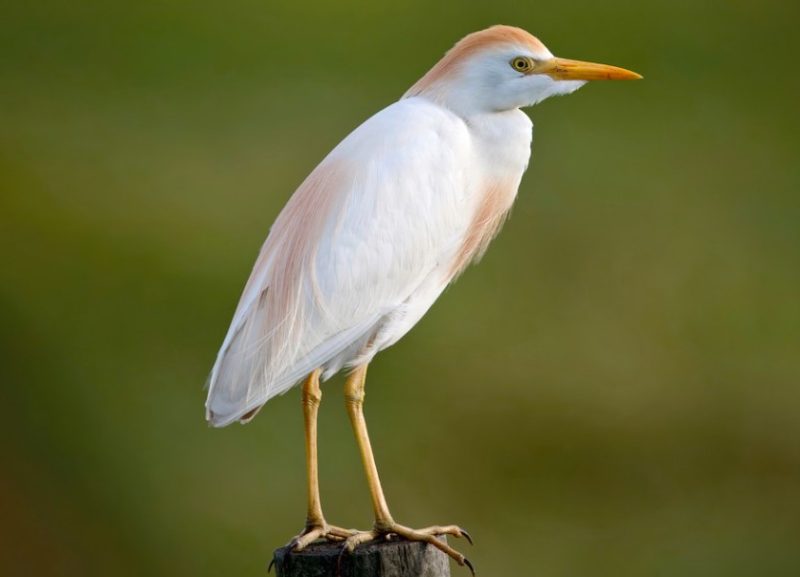
The Cattle Egret is a smaller, stockier white heron, measuring about 18 to 22 inches in length with a wingspan near 37 to 41 inches. It features a thick yellow bill and relatively shorter legs compared to other egrets. During breeding season, its plumage shows buff-orange highlights on the head, chest, and back, adding a splash of color to its otherwise white feathers.
Cattle Egrets are well known for their close association with grazing mammals, often seen walking through pastures or fields alongside cattle or horses. They feed primarily on insects disturbed by the movement of these large animals. Their vocalizations include soft “clucks” and short, nasal calls, which they use while flying or during social interactions.
In North Carolina, Cattle Egrets are common in open fields, agricultural lands, and wet meadows rather than strictly aquatic environments. They adapt well to human-modified landscapes and are often spotted near farms and pastures. This bird’s behavior of following livestock distinguishes it from other herons and egrets in the region and reflects its unique ecological niche.
American White Pelican (Pelecanus erythrorhynchos)

The American White Pelican is a large waterbird with a striking all-white body contrasted by black flight feathers visible in flight. It has a massive orange bill with a characteristic pouch used for catching fish. Adults measure about 50 to 70 inches in length with a wingspan that can reach up to 9 feet, making it one of the largest North American birds.
This pelican is identified by its enormous size, broad wings, and distinctive orange bill and legs. Its slow, graceful flight features deep, steady wingbeats. Unlike the Brown Pelican, the American White Pelican usually fishes by cooperative group fishing rather than diving. It emits low grunts and hisses rather than a typical bird song.
In North Carolina, the American White Pelican is a rare visitor, usually seen during migration or winter near large inland lakes and reservoirs. It prefers shallow freshwater or alkaline lakes where it can feed on fish by scooping them up with its large bill. Its presence is exciting for bird watchers due to its rarity in the region.
Wood Stork (Mycteria americana)

The Wood Stork is a large wading bird primarily covered in white feathers with contrasting black flight feathers on its wings and tail. Adults stand about 35 to 45 inches tall with a wingspan between 5 and 6 feet. Its bare, scaly grayish head and long, thick bill give it a prehistoric look.
Wood Storks forage in shallow water, sweeping their slightly open bills side to side to catch fish and amphibians. Their slow, deliberate flight shows broad wings with black tips. They are mostly silent but may emit low clucks or hisses during nesting season.
In North Carolina, Wood Storks inhabit freshwater and brackish wetlands such as swamps and marshes, especially during the summer breeding season. They prefer warmer coastal and inland wetland habitats. Their nesting colonies are often found in trees over water, where they form large communal rookeries.
Great White Heron
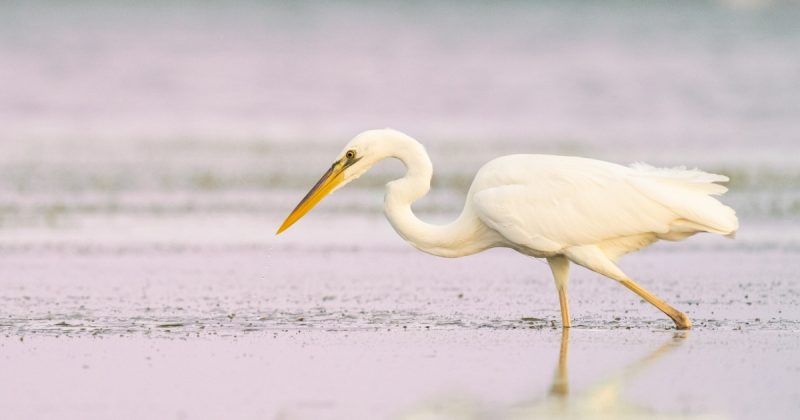
The Great White Heron is a rare white color morph of the Great Blue Heron, not a separate species, distinguished by its completely white plumage while retaining the large size and shape of the Great Blue Heron. It measures about 45 to 54 inches long with a wingspan of up to 6 feet.
Identification is challenging as it looks like a giant snowy bird but maintains the Great Blue Heron’s long yellow bill and grayish legs. In flight, its slow wing beats and long neck are typical. It is silent most of the time but can produce harsh croaks when disturbed.
In North Carolina, Great White Herons are rare visitors mostly found in coastal marshes and estuaries. Their habitat overlaps with Great Blue Herons, and they often forage alone or in small groups. Their rarity and striking white color make them a special sight for bird enthusiasts.
Ring-billed Gull (Larus delawarensis)
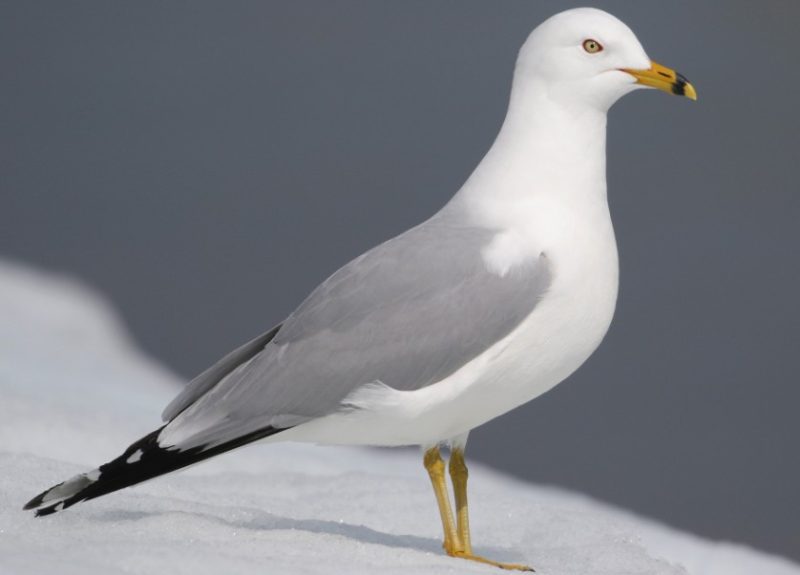
The Ring-billed Gull is a medium-sized gull with a white head and body and pale gray wings edged with black tips. It is about 18 to 26 inches long with a wingspan of 46 to 54 inches. The most distinctive feature is the black ring around its yellow bill.
This gull is commonly seen in both coastal and inland habitats, often scavenging along beaches, landfills, and parking lots. Its call is a high-pitched, raucous “keow” or laughing sound. The Ring-billed Gull is social and often gathers in large flocks, especially during migration and winter.
In North Carolina, this gull is a common visitor throughout the year, especially near coastal shores, bays, and inland lakes. It thrives in urban and suburban environments where food is abundant. Their adaptability and distinctive bill ring make them easy to identify.
Herring Gull (Larus argentatus)

The Herring Gull is a large gull with a white body, light gray back and wings, and black wingtips with white spots. Adults are about 23 to 27 inches long with a wingspan reaching 54 to 58 inches. Its thick yellow bill has a characteristic red spot near the tip.
Herring Gulls are opportunistic feeders, known for their loud, harsh calls often described as a “laughing” sound. They are commonly seen scavenging at beaches, docks, and garbage dumps. Their behavior includes soaring flight and walking confidently on shorelines.
In North Carolina, Herring Gulls are common winter visitors, especially along the coast and large inland water bodies. They prefer open habitats near water and often mix with other gull species. Their robust size and distinct calls make them a familiar sight during the colder months.
Laughing Gull (Leucophaeus atricilla)
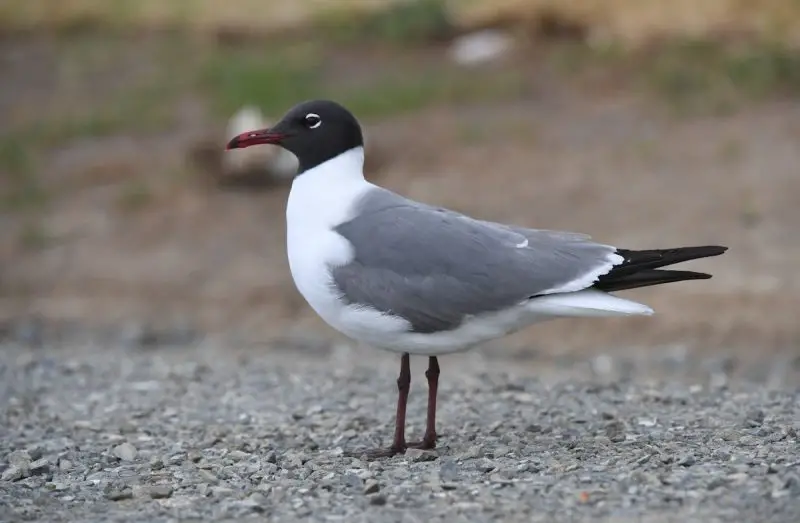
The Laughing Gull in its non-breeding plumage shows a mostly white body with gray wings and a pale head, lacking the black hood seen in breeding adults. It measures about 16 to 18 inches in length with a wingspan of 39 to 44 inches. Its bill is dark and slender, and its legs are grayish.
In winter, Laughing Gulls can be identified by their distinctive laughing-like calls, though these are softer outside the breeding season. They are agile fliers often seen gliding over coastal waters and scavenging along beaches or near fishing piers. Their playful behavior includes swooping and diving to catch food.
In North Carolina, non-breeding Laughing Gulls are common winter visitors along the coast. They frequent salt marshes, estuaries, and shorelines, often mixing with other gull species. Their presence is a welcome sign of coastal bird diversity during the colder months.
Black-crowned Night Heron (juvenile) (Nycticorax nycticorax)
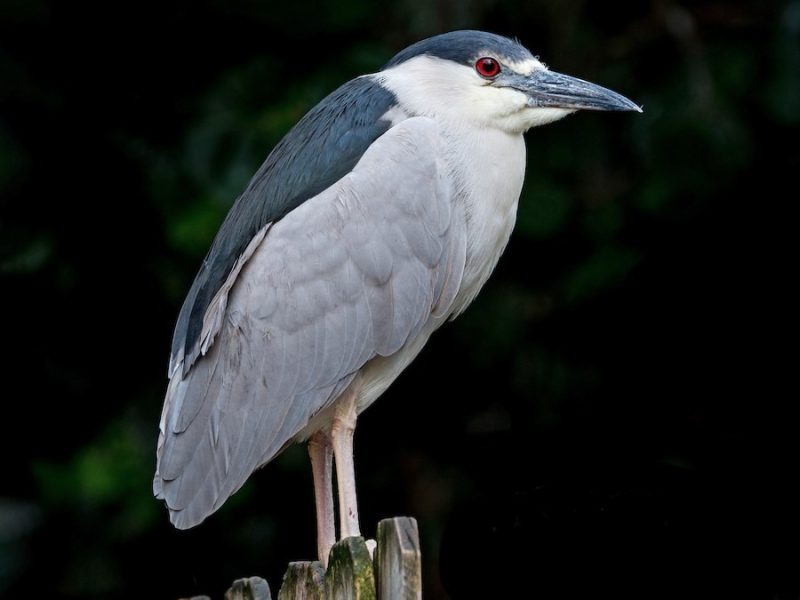
Juvenile Black-crowned Night Herons display mottled white and brown plumage that provides excellent camouflage in wetlands. They are medium-sized herons, measuring about 23 to 28 inches in length with a wingspan near 45 inches. Their thick necks and chunky bodies distinguish them from other herons.
These juveniles have a patchy, streaked appearance, lacking the solid black crown and back of adults. Their behavior is mostly crepuscular, feeding at dusk and dawn on fish, amphibians, and invertebrates. Their calls are low croaks and squawks, especially during nesting.
In North Carolina, juvenile Black-crowned Night Herons are found in freshwater and coastal wetlands, often in colonies. They prefer dense vegetation near water for roosting and nesting. Their mottled plumage helps them blend into reeds and brush while they grow into their adult colors.
Ivory Gull (Pagophila eburnea)
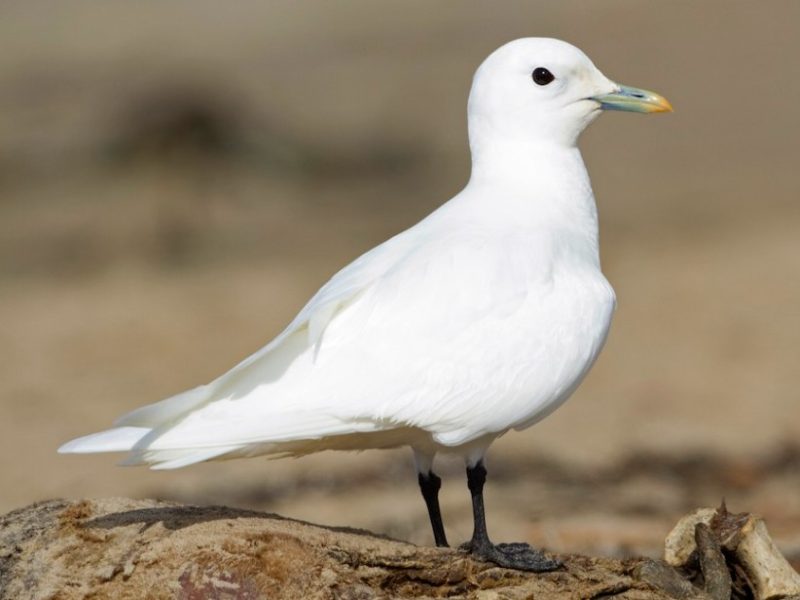
The Ivory Gull is a striking, medium-sized gull entirely white with a thick yellow bill and black legs. Adults measure about 20 to 22 inches in length with a wingspan near 52 inches. This species is primarily an Arctic bird and is very rare in North Carolina.
Identification is unmistakable due to its pure white plumage and lack of black wingtips seen in many gulls. It typically inhabits polar sea ice and scavenges on marine mammal carcasses. Its vocalizations include high-pitched, thin calls.
As a rare vagrant to North Carolina, sightings of Ivory Gulls are exceptional and occur mostly in winter. Birders treasure these appearances as they represent a remarkable journey from Arctic regions far north. When observed, they are usually along the coast or large bodies of water.
White-breasted Nuthatch (Sitta carolinensis)
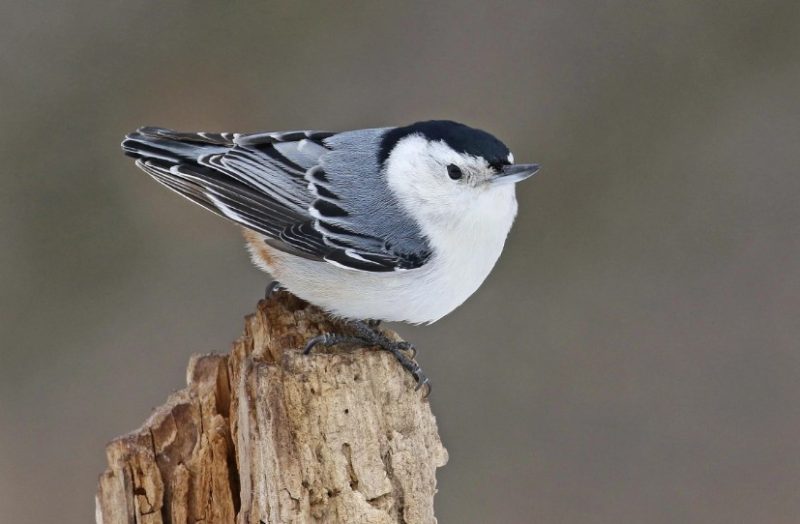
The White-breasted Nuthatch is a small, stout bird with a white face and underparts, a black cap, and bluish-gray upperparts. It measures about 5 to 6 inches in length with a wingspan of approximately 8 to 10 inches. Known for its unique behavior, it often climbs tree trunks headfirst.
This nuthatch uses its strong bill to probe bark crevices for insects and seeds. Its vocalizations include a distinctive nasal “yank-yank” call used to communicate and defend territory. It is an active, inquisitive bird often seen in deciduous forests and backyards.
In North Carolina, White-breasted Nuthatches are year-round residents, inhabiting mature woodlands and suburban areas. They are cavity nesters and often store food in bark crevices. Their acrobatic foraging makes them a favorite among bird watchers.
Snow Bunting (Plectrophenax nivalis)
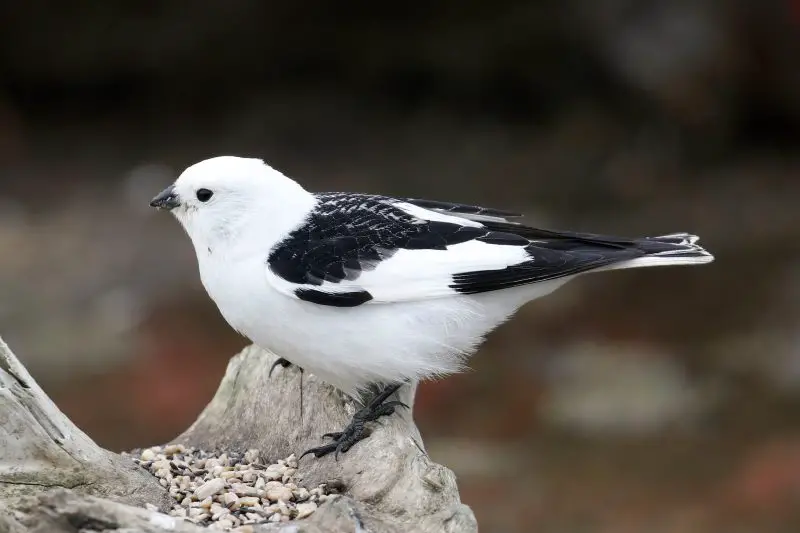
The Snow Bunting is a small, hardy bird that spends winters in North Carolina. It measures about 6 to 7 inches long with a wingspan around 11 to 13 inches. In winter, its plumage is mostly white with black and brown markings on the wings and back, providing excellent camouflage in snowy habitats.
This species is recognized by its crisp, white face and underparts, contrasted with dark wing patches. Snow Buntings forage on open ground, feeding mainly on seeds and small insects. Their call is a soft, tinkling warble often heard in flight.
In North Carolina, Snow Buntings are rare winter visitors, usually found in open fields and coastal dunes. Their presence is seasonal and weather-dependent, often influenced by northern cold spells. Birders appreciate their striking appearance and uncommon visits.
Common Tern (Sterna hirundo)

The Common Tern is a medium-sized seabird with a slender body, white plumage, and a distinctive black cap covering the top of its head. It measures about 14 to 17 inches in length with a wingspan of 33 to 39 inches. Its pointed orange-red bill and forked tail aid in agile flight and diving.
This tern is easily identified by its black cap, sharp bill, and elegant flight pattern, often hovering briefly before plunging into water to catch small fish. It produces a sharp “keer” or “kree” call frequently heard near nesting colonies.
In North Carolina, Common Terns breed along sandy beaches, islands, and salt marsh edges during the summer. They migrate south in winter but may be seen year-round along the coast. Their nesting colonies are often vulnerable to disturbance, making conservation efforts important.
Forster’s Tern (Sterna forsteri)
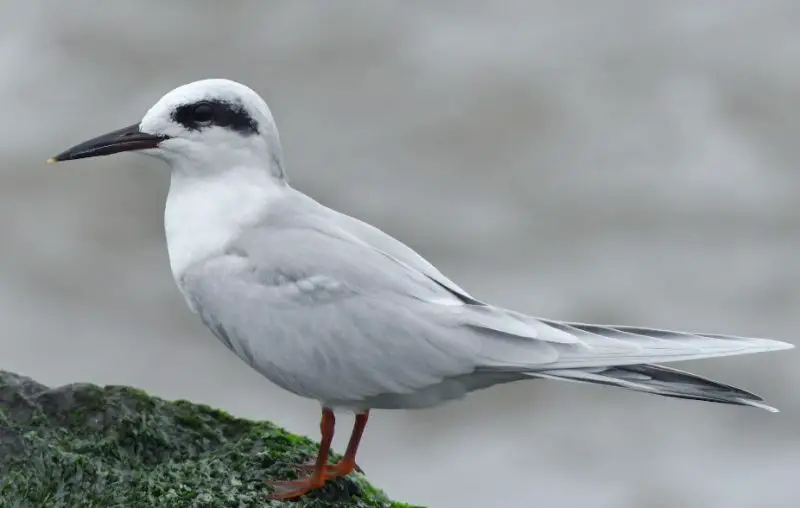
Forster’s Tern is similar in size to the Common Tern but can be distinguished by its more slender appearance and a bill that is mostly orange with a black tip. It has white underparts and a pale gray back, with a black cap during breeding season that fades to a dark patch behind the eye in winter. Adults measure about 15 to 18 inches in length with a wingspan around 33 to 39 inches.
Forster’s Terns are graceful fliers known for their hovering and plunge-diving to capture fish and aquatic insects. Their calls include high-pitched “keer” and chattering notes. Outside breeding season, their plumage becomes less distinct, making identification more challenging.
In North Carolina, Forster’s Terns inhabit coastal bays, estuaries, and marshes. They breed in colonies often shared with other waterbirds and are seen year-round, especially near shallow waters where fish are abundant. Their presence reflects healthy coastal ecosystems.
American Oystercatcher

The American Oystercatcher is a large shorebird with a striking appearance: a mostly black head and upper body contrasting with a white belly and underparts. It measures about 18 to 20 inches in length with a wingspan of approximately 30 to 35 inches. Its bright orange-red, heavy bill is specially adapted for prying open shellfish.
Identification is easy due to its bold coloration and loud, piercing whistles. American Oystercatchers are often seen running along sandy beaches or mudflats, probing for oysters, clams, and mussels. Their calls are harsh and repetitive, used for territory defense and communication.
In North Carolina, American Oystercatchers inhabit coastal beaches, salt marshes, and barrier islands. They nest in shallow scrapes on sandy or rocky shores. Their presence is an important indicator of healthy shellfish populations and coastal habitats.
Eastern Screech Owl (white morph) (Megascops asio)
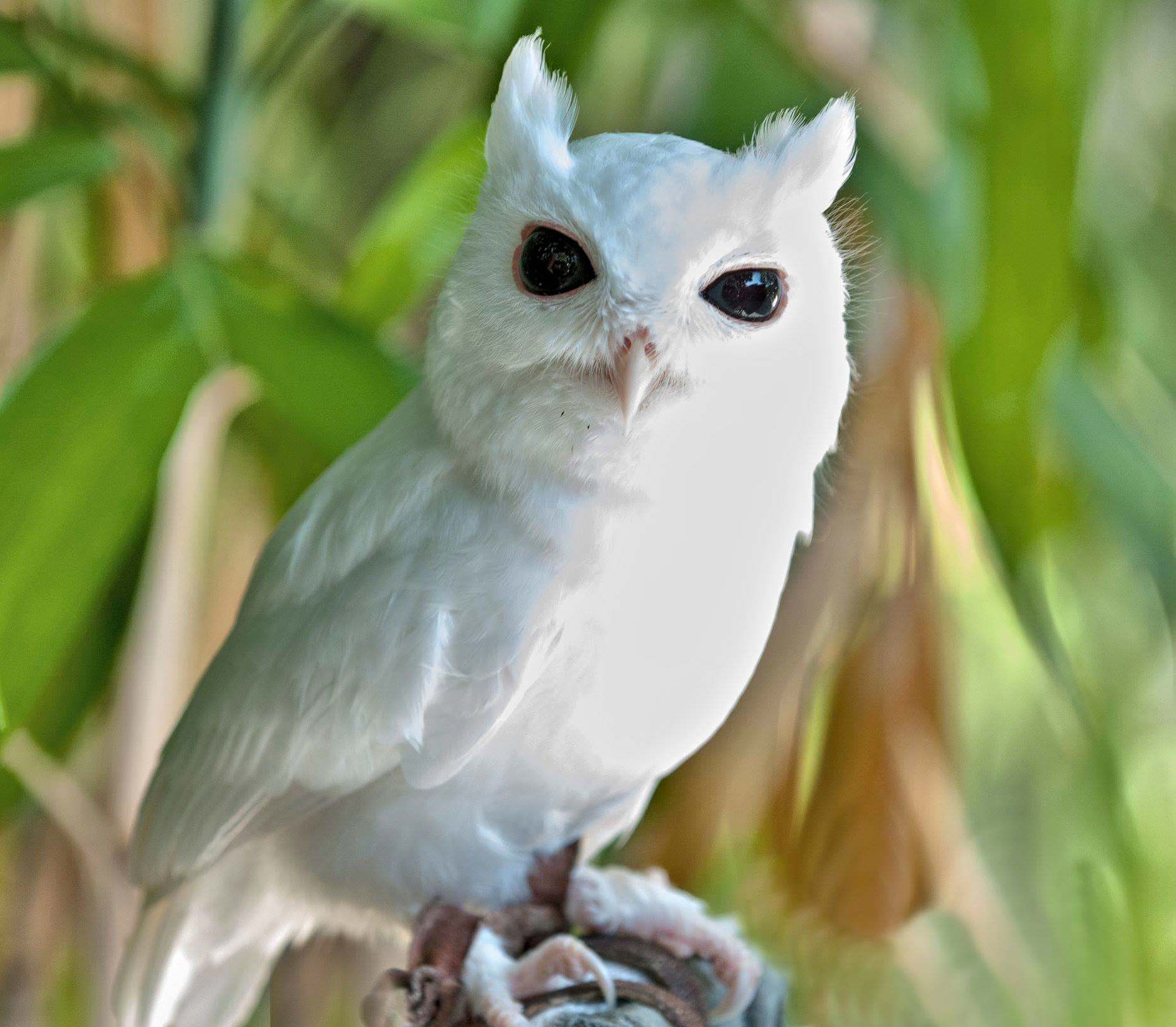
The Eastern Screech Owl is a small, nocturnal owl species with two common color morphs: gray and white (sometimes called rufous-white). The white morph has pale, nearly all-white plumage with faint markings, blending well into light-colored tree bark or snowy backgrounds. This owl measures about 6 to 10 inches in length with a wingspan around 18 to 24 inches.
This species is known for its haunting, tremolo-like call and its ability to camouflage effectively during the day. Eastern Screech Owls are cavity nesters, often using old woodpecker holes or nest boxes. The white morph is rarer and less common than the gray morph.
In North Carolina, Eastern Screech Owls are widespread residents found in woodlands, suburban areas, and parks. The white morph is occasionally observed and appreciated by bird watchers for its unique appearance. Their nocturnal habits make them less commonly seen but often heard.
Black-headed Gull (Chroicocephalus ridibundus)
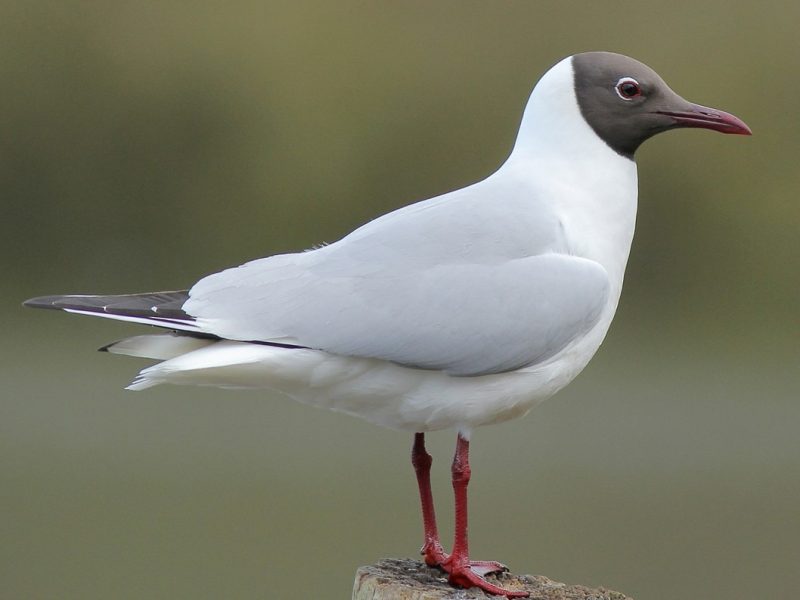
The Black-headed Gull is a medium-sized gull that displays a white body with a distinctive dark chocolate-brown head during breeding season. It measures about 15 to 18 inches long with a wingspan of 39 to 44 inches. Outside of breeding season, the dark head becomes a grayish spot behind the eyes.
This gull is agile in flight and vocalizes with a variety of high-pitched calls and trills. It feeds on insects, fish, and scraps in coastal and inland waters. Identification in North Carolina is notable because this species is a rare vagrant and not typically found in the region.
Sightings of Black-headed Gulls in North Carolina are exceptional and usually occur during migration or unusual weather patterns. Birders treasure these rare visitors, often spotting them near coastal bays or large lakes.
Snowy Owl (Bubo scandiacus)

The Snowy Owl is a large, powerful owl best known for its brilliant white plumage with varying amounts of black or brown barring, especially on females and juveniles. Males tend to be whiter. They measure about 20 to 28 inches in length with a wingspan of 50 to 60 inches. Their bright yellow eyes stand out strikingly against their snowy feathers.
This owl is adapted to Arctic tundra but occasionally irrupts southward in winter, making it a very rare visitor to North Carolina. It hunts primarily rodents and small mammals, often by day, unlike most owls. Its call is a low, deep hoot used for communication during breeding.
In North Carolina, Snowy Owl sightings are extremely rare and considered special events. When observed, they are typically on open fields, airports, or coastal beaches during cold winters. Their majestic white plumage makes them a spectacular bird to see.
Best Time and Places to See White Birds in North Carolina
The best time and place to see white birds in North Carolina depends on the species, but in general, winter and early spring offer the most rewarding experiences. During these seasons, many white birds migrate from the north, such as the Tundra Swan and the Snowy Owl, and can be spotted in wetlands and coastal areas. This is also when resident species like the Ring-billed Gull and Snowy Egret are more visible, as the landscape is less dense and offers clearer views.
Coastal regions of North Carolina, including the Outer Banks, Pea Island National Wildlife Refuge, and Mattamuskeet National Wildlife Refuge, are among the top locations for spotting white birds. These areas provide a mix of marshes, lakes, and sandy shorelines that attract a variety of waterfowl and shorebirds. In inland areas like Jordan Lake, Falls Lake, and parts of the Piedmont, species such as the Great Egret and White Ibis can also be seen during the breeding season.
Early morning is the best time of day to observe white birds in North Carolina. Birds are most active at dawn, and the cooler temperatures and soft natural light make identification easier. Bringing binoculars, a camera, and a field guide can enhance the birdwatching experience and help with accurate identification.

